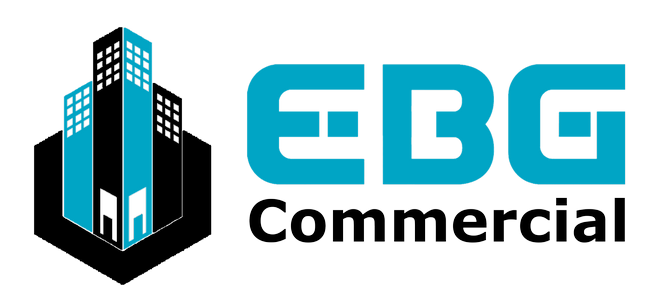Understanding the DFW Retail Market: Insights for Property Owners
The Dallas-Fort Worth (DFW) retail market is a dynamic and evolving landscape that offers significant opportunities for property owners. Whether you’re a seasoned investor or a new property owner, understanding the nuances of the DFW retail market is crucial for making informed decisions and maximizing returns on your investment. In this blog post, we’ll explore key insights into the DFW retail market, trends to watch, and strategies for success.
1. The DFW Retail Market Overview
The DFW retail market is one of the most robust in the nation, driven by the region’s economic growth, population increase, and diverse consumer base. With a population exceeding 7.6 million people, DFW is a major economic hub that attracts businesses and retailers from across the country and around the world. The area’s strong job market, low unemployment rate, and high disposable income contribute to a vibrant retail environment.
Economic Drivers: The DFW area boasts a diversified economy with key sectors including technology, finance, healthcare, and retail. This economic diversity supports retail growth by providing a stable and growing consumer base.
Population Growth: The region has experienced substantial population growth over the past decade, with both the city of Dallas and its surrounding suburbs seeing an influx of new residents. This growth creates increased demand for retail spaces and opportunities for property owners.
2. Key Trends in the DFW Retail Market
a. Shift Towards Mixed-Use Developments
One of the notable trends in the DFW retail market is the rise of mixed-use developments. These projects combine retail, residential, and office spaces into a single property, creating a vibrant and walkable environment. Mixed-use developments appeal to consumers who prefer convenience and accessibility, and they often attract higher-quality tenants. For property owners, investing in or developing mixed-use properties can enhance the value of their assets and ensure a steady stream of foot traffic.
b. E-Commerce Integration
The growth of e-commerce has had a profound impact on the retail sector. Brick-and-mortar retailers are increasingly integrating online and offline experiences to meet consumer expectations. Click-and-collect services, where customers order online and pick up in-store, are becoming more popular. Property owners should consider how their retail spaces can accommodate these hybrid models and support the evolving needs of tenants.
c. Focus on Experience
Today’s consumers are looking for more than just products—they want experiences. Retailers are responding by creating immersive and engaging environments that offer unique experiences beyond traditional shopping. This trend is evident in the rise of experiential retail, where stores host events, workshops, and interactive displays. Property owners can attract tenants by offering flexible and adaptable retail spaces that support these experiential elements.
d. Emphasis on Sustainability
Sustainability is increasingly becoming a key consideration in retail development. Consumers are more conscious of environmental issues, and retailers are responding by adopting eco-friendly practices. Properties with green certifications, energy-efficient systems, and sustainable design features are likely to attract tenants and customers who value environmental responsibility. Property owners should consider incorporating sustainable practices into their retail spaces to stay competitive and align with market demands.
3. Location and Demographics
a. Understanding Demographics
Demographic factors play a crucial role in the success of retail properties. DFW is characterized by a diverse population with varying income levels, age groups, and cultural backgrounds. Property owners need to understand the demographics of their target areas to attract the right tenants and cater to local consumer preferences. For example, areas with a high concentration of young professionals may benefit from trendy retail concepts and dining options, while family-oriented neighborhoods may see success with stores that cater to children and households.
b. Strategic Location
Location is a critical factor in retail success. High-traffic areas, proximity to major transportation hubs, and visibility are essential for attracting customers. In DFW, popular retail corridors include Uptown Dallas, the Galleria area, and the Shops at Legacy in Plano. However, emerging neighborhoods and suburban areas are also seeing increased retail activity as the region continues to expand. Property owners should carefully evaluate the location of their assets and consider factors such as accessibility, competition, and future development plans.
4. Market Opportunities and Challenges
a. Opportunities
- Urban Revitalization: Many parts of DFW are undergoing revitalization, offering opportunities for property owners to invest in up-and-coming neighborhoods. These areas often benefit from increased foot traffic and rising property values.
- Retail Demand: The continued growth of the DFW population drives demand for retail spaces. New developments and renovations present opportunities for property owners to capitalize on this demand and attract high-quality tenants.
- Technology Integration: Embracing technology, such as digital signage and advanced point-of-sale systems, can enhance the attractiveness of retail spaces and support tenant success.
b. Challenges
- Market Saturation: Some areas of DFW may experience market saturation, leading to increased competition among retailers. Property owners must carefully assess the competitive landscape and tenant mix to ensure long-term success.
- Economic Fluctuations: Economic changes, such as shifts in consumer spending and inflation, can impact the retail market. Property owners need to stay informed about economic trends and be prepared to adapt their strategies accordingly.
5. Strategies for Success
a. Conduct Market Research
Before investing in or leasing retail property, conduct thorough market research to understand local trends, demographics, and competition. This information will help you make informed decisions and tailor your approach to the specific needs of the market.
b. Build Strong Relationships
Develop strong relationships with tenants, brokers, and other stakeholders in the retail industry. Networking and collaboration can provide valuable insights, opportunities, and support for your property management and investment efforts.
c. Adapt to Changing Trends
Stay agile and responsive to changing retail trends. Regularly assess your property’s features and amenities to ensure they align with current consumer preferences and industry developments.
d. Focus on Property Maintenance
Maintaining your property in excellent condition is essential for attracting and retaining high-quality tenants. Regular upkeep, renovations, and updates can enhance the appeal and value of your retail space.
Conclusion
The DFW retail market presents a wealth of opportunities for property owners who are informed and strategic. By understanding key trends, demographics, and market dynamics, property owners can make smart decisions and position their assets for success. Staying ahead of emerging trends, embracing new technologies, and adapting to changing consumer preferences will be crucial in navigating the evolving retail landscape. With the right approach, property owners can thrive in the vibrant and dynamic DFW retail market.


